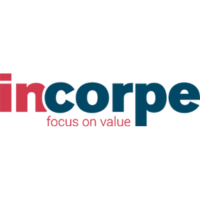An In-house bank (‘IHB’) is a great way to improve cash management, mitigate transfer risks and reduce costs. There are many Treasury Management Systems (‘TMSs’) that offer the possibility to set up an IHB that offers multiple services to group companies.
When an In-house bank is implemented, the primary focus is usually on the technical solution to operate the In-house bank. Generally tax advisors are involved to advise on applicable interest rates. However, legal advisors are often involved at a late stage or are not involved at all. This can be a tricky approach because not having proper in-house bank agreements in place can violate compliance obligations, may lead to personal liability of directors and can turn out to be a costly affair.
In-house bank accounts
The cornerstone of any In-house bank structure is current accounts between the IHB and each of the group companies that make use of the services of the IHB. Such a current account is generally referred to as an In-house bank account (‘IHB Account’). In practice, almost all services an IHB offers to group companies result in debit/credit bookings on the IHB Accounts, like sweeps for cash management purposes, settlement of intercompany payments, payments/receipts on behalf, and settlement of IHB/corporate charges. The IHB Account can have a debit balance or a credit balance. A debit balance reflects a loan by the IHB to a group company, while a credit balance reflects the opposite. This means that both the IHB as well as a group company may have a credit risk on each other. Following good corporate housekeeping, the IHB Accounts should be documented to protect the interests of both the IHB and the group companies.
Arm’s length terms
Treasurers generally realise that arm’s length pricing terms should apply to the IHB Accounts and it is common practice to involve tax advisors to determine the interest rate applicable to balances on IHB Accounts. However, OECD Guidelines specify that not only the pricing should be at arm’s length, but also that the overall transaction is structured at arm’s length. This may also be required by contract parties, like banks involved to execute cash sweeps. In applying the arm’s length principle to a financial transaction it is necessary to consider the conditions that independent parties would have agreed upon in comparable circumstances. This means that parties also have to agree on ‘legal’ terms that apply to the IHB account, such as term, termination rights, information rights, (multi-currency) set-off and applicable law. To avoid any discussion with tax authorities about whether applicable terms are at arm’s length, these terms could be based on terms applicable to external bank accounts (with a related overdraft facility). By doing so, the terms of the IHB Account are not only tax-compliant but also include all relevant aspects. Furthermore, such reference avoids discussions with group companies about whether the applicable terms are appropriate because similar terms apply to any bank account in the jurisdiction of the IHB.
Netting and discharge of debt
When offering in-house bank services, the IHB often acts as a kind of clearing house to net obligations outstanding between group companies. For instance, group companies and the IHB may agree that an intercompany receivable will not be paid via a bank account but will be debited/credited to the IHB Accounts of the group companies involved. The aim in such a situation is that the IHB would be substituted as the counterparty to each of the group companies and that each group company only has a debit/credit position to the IHB. The balance on the IHB Account will reflect the net amount due to the IHB from each group company, or vice versa, that is equivalent to the multilateral net position of each group company vis-à-vis all group companies as a whole. An IHB Account is a contractual debit/credit facility between the IHB and a group company.
Debiting an IHB Account of a group company that has a debt to another group company will not automatically discharge such debt if the IHB Account of the other group company is credited. The original debt will only be discharged if the parties explicitly agree that these bookings on the IHB Accounts will result in a discharge of the original debt. This means that without proper documentation, the original debt remains in place, despite the bookings on the IHB Accounts of the group companies involved. In Germany, a court has decided that, in the absence of explicit agreements to that effect, bookings on intercompany accounts did not result in a discharge of the original debts. The original receivables of the bankrupt company were not discharged and remained outstanding. In the liquidation process of the group company, the group companies had to pay the original receivables of the liquidated company, and the company acting as an in-house bank had a (worthless) claim on the liquidated company (the credit entries on the IHB Account of the liquidated company were disregarded).
Treasury Management Systems
A TMS generally treats an IHB Account in a similar manner as a bank account. The debit or credit position on an IHB Account is displayed similarly as the system does for balances on external bank accounts. Intercompany transfers in a TMS can often be made by debiting and crediting IHB Accounts in the same manner as if payments are made by debiting/crediting external bank accounts. In this way, the TMS may create the impression that balances on an IHB Account are equal to balances on a bank account. By Dutch law, crediting a bank account results in a discharge of the debt that has been paid, even if such debt is paid by a third party. In other words, if a (third) party pays an amount to the bank account of the creditor, the debt paid will cease to exist. Without proper documentation, this is not always the case if debts are settled via IHB Accounts. When a TMS is implemented, treasurers should therefore always check whether internal agreements sufficiently arrange the legal consequences that are intended by the functionalities of the TMS.
Credit and liquidity risks
The IHB, as a central counterparty, would explicitly take both credit and liquidity risk on its group companies. At the same time, each group company would have counterparty credit and liquidity risk concerning the IHB, not to the group companies. Settlements via the IHB convert the credit risk on a group company into a credit risk on the IHB. Thus the IHB would have to manage its credit exposure to each participating group company as well as liquidity risks associated with settlements. As the IHB typically is the parent company of the participating group companies, the IHB will have full insight is such risks. However, also group companies should be able to asses these risks concerning the IHB. Generally, the IHB, being the parent company of the group, has a stronger credit profile than an individual group company. Nevertheless, it could be different. Any company should monitor the creditworthiness of a party to which it lends money. If a group company has a credit balance on its IHB Account, it has a credit exposure on the IHB. The In-house bank contract between the IHB and a group company should therefore include an obligation for the IHB to provide (on request) information about its financial position and the right for the group company to terminate the in-house bank agreement at any time (taking into account a reasonable notice period for the IHB to act upon such notice). In some jurisdictions (e.g. Germany) the proper protection of cash and the risks associated with lending excess cash is especially important because failure to do so could lead to the personal liability of directors.
Conclusion
Without proper documentation, there is a risk that the IHB Account is not tax compliant, that bookings on an IHB Account do not result in a discharge of the original debt, and that directors of a group company are personally liable. Fortunately, there are specialised law firms that offer flexible contracts to document In-house bank structures in a fast and easy manner.














